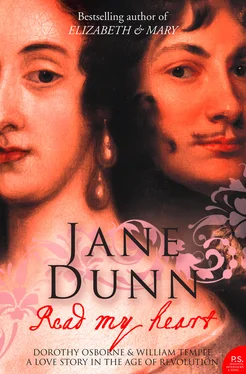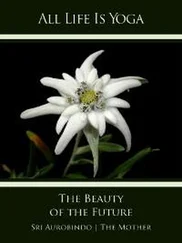†This house next to the river at Chelsea was called Danvers House and adjoined what used to be Sir Thomas More’s mansion, known in the seventeenth century as Beaufort House. In 1696 Danvers House was pulled down to make way for Danvers Street. This runs now from Paultons Square to Cheyne Walk, parallel with Beaufort Street: only the names of these great houses remain.
*Although his brother was mortified by this marriage and the gossips wondered how such an eligible young man had chosen a woman more than twice his age, making him a stepfather of ten, it was reputably a happy union that lasted until Magdalen’s death in 1627. Aubrey did not share the world’s surprise, pointing out that the gorgeous youth had married Lady Herbert ‘for love of her Witt’. Magdalen Herbert was one of the lucky ones. Her life and character were celebrated in print by both her brilliant son George Herbert and her friend, the matchless poet and preacher John Donne.
†However, Sir John Danvers died at his house in Chelsea in 1655, without the disgrace that would come with the restoration of Charles II, and was buried in the family church at Dauntsey in Wiltshire. Five years later, with a king on the throne again, his name was added to the Act of Attainder as an enemy of the state.
*Gilbert, who became St Gilbert, was still alive in the middle of the twelfth century, a Lincolnshire lad born to wealthy Norman parents who set up in all thirteen religious communities. The Gilbertine Order remained the only truly English monastic order.
†Chicksands was sold to the Crown Commissioners in 1936. In 1939 it was leased to the Air Ministry and was known as RAF Chicksands. The USAF were tenants from 1950–95 when some American servicemen collected the incidents of the ghost in the night for a booklet, entitled Legend and Lore of Chicksands Priory.
*The weekly charge to the exchequer of £59 1s 10d for this enterprise was broken down thus: 16s a day to the governor; 4s a day for the lieutenant; 2s 6d a day for the ensign; four sergeants, 12d a day each; four drummers, 12d a day each; two surgeons, 12d a day each; two gunners, 12d a day each; one clerk, 12d a day; 200 men, 8d a day each. The feeding of the men however fell on the townspeople of St Peter Port.
*The first English translation of his The Education of a Christian Woman , a handbook on the education and conduct of girls and women, commissioned by Henry VIII’s Queen Catherine, was launched from the household of Sir Thomas More. It was published in 1528–9 and, immediately successful in England, went through at least nine editions in sixty years.
*It is hard to get accurate mortality rates for infants at the time, but Stone, in The Family, Sex and Marriage , conjectures that up to one-third of all babies died before they were one year old.
*Anne Harrison (1625–80) married the royalist Sir Richard Fanshawe, who became secretary to Charles II in exile. Her life was full of adventures and reversals of fortune. She had six sons and eight daughters but all but one son and four daughters predeceased Sir Richard, who died of a fever in 1666. Like Dorothy Osborne, Lady Fanshawe was consort to a diplomat on missions abroad during Charles II’s restoration. Dorothy went with her husband to the Netherlands, Anne to Portugal and then Spain.
†Margaret Lucas (1623–74), as maid of honour to Charles I’s Queen Henrietta Maria, followed her into exile in Paris and there met and married William Cavendish. She became the Duchess of Newcastle and, in publishing twenty-three books, the most prolific woman writer that the world had yet seen. She was unconventional, spasmodically brilliant and engaging, apologising for her presumption as a mere woman in daring to seek a commercial readership and fame.
*George Savile (1633–95), 1st Marquis of Halifax, writer, moderate politician and friend of William and Dorothy; after the Glorious Revolution of 1688 he was chosen to offer the crown to William and Mary II.
*Jeremy Taylor (1613–67), born in Cambridge and educated at the university there and at Oxford All Souls. He was a chaplain to Charles I and was arrested in 1645 during the first civil war. He retired to Wales until the restoration and wrote most of his highly successful books at this time. Two of the most famous, The Rule and Exercises of Holy Living (1650) and The Rule and Exercises of Holy Dying (1651), were practical and spiritual manuals written with a direct simplicity and grandeur of spirit. Hazlitt wrote: ‘When the name of Jeremy Taylor is no longer remembered with reverence, genius will have become a mockery and virtue an empty shade.’ Taylor became Bishop of Down and Connor and later of Dromore in Ireland where he died.
*This was the equivalent of about £49,000 today.
*Careye obsessively noted their meagre and putrid rations: ‘peas which were sprouting and rancid bacon’; ‘cheese boiled with stinking grease, beer and bread as usual’. The water supply for the castle was contaminated when a cannon ball destroyed part of the storage cistern and there was not enough to drink. After the prisoners’ beer rations were stopped the lack of drinking water and the saltiness of the preserved food meant they began to suffer serious effects of dehydration. There is little reason to think that the governor and garrison were much better victualled.
CHAPTER THREE
When William Was Young
When I was young and in some idle company, it was proposed that every one should tell what their three wishes should be, if they were sure to be granted: some were very pleasant, and some very extravagant; mine were health, and peace, and fair weather
WILLIAM TEMPLE, essay, ‘Of Health and Long Life’
WILLIAM TEMPLE WAS born into a family of clever and robust country gentlemen who showed an independence of mind and political fleetness of foot in navigating the quicksand of allegiances during the middle of the seventeenth century. Not for them the self-sacrifice and dogged certainties of a Sir Peter Osborne. More intellectually curious perhaps, more pragmatic than idealistic, they served both king and parliament, and managed to promote their careers despite the reversals of civil war, establishment of a new republic and restoration of a king.
William’s nephew Henry Temple, 1st viscount Palmerston, believed that the family was descended from the eleventh century magnate Leofric, Earl of Mercia, and Lady Godiva who, tradition had it, rode naked through Coventry to force her husband to revoke his oppressive taxation. More certain, and closer in time, was that William’s grandfather, after whom he was named, was the Sir William Temple who became provost of Trinity College, Dublin, in 1609. He was born in 1555 in a time of turmoil and suspicion at the end of Mary Tudor’s reign. The younger son of a younger son, he had to earn his own living. He flowered with the Elizabethan age and was a close friend and then secretary to the soldier poet Sir Philip Sidney. * When both were in their early thirties, he followed Sidney to the Netherlands when he was made governor of Flushing: family lore had it that Sir William then held Sidney in his arms as he died of infection from a war wound in 1586.
From being the intimate of one young Orpheus, Temple now allied himself with an Icarus. He became secretary to Elizabeth I’s ambitious favourite the Earl of Essex. † When Essex was executed in 1601 for plotting against the queen, Temple temporarily lost favour but Elizabeth had only two more years to live. He had spent almost a whole lifetime as an Elizabethan, but was to survive through two more kings’ reigns. His post as provost of Trinity was awarded under James I, as was his knighthood in 1622; he then died in 1627, the year of Dorothy’s birth and two years into the reign of Charles I.
Читать дальше












